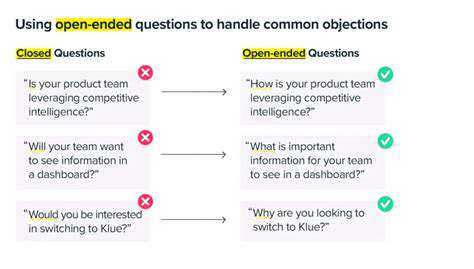Guide to Learning Cybersecurity Forensics

Defining the Scope
Cybersecurity forensics is a multifaceted discipline that delves into the investigation of digital crimes and security incidents. Investigators meticulously examine computer systems, networks, and data to uncover the root cause, assess the damage, and understand the full impact of security breaches. This painstaking work demands specialized expertise and a methodical approach. The process not only helps organizations recover from attacks but also strengthens their defenses against future threats.
Key Principles of Investigation
Successful cybersecurity forensics relies on fundamental principles: maintaining evidence integrity, establishing a clear chain of custody, and applying proven analytical methods. These cornerstones ensure that findings hold up in court and withstand legal scrutiny. Without strict adherence to these principles, even the most compelling evidence may be rendered useless. Investigators must document every step to create an airtight case.
Evidence Acquisition and Preservation
The forensic process begins with careful evidence collection. Specialists create forensic images of storage devices and document system states without altering original data. This exacting procedure forms the foundation for any credible investigation. Techniques include write-blocking to prevent data modification and cryptographic hashing to verify evidence authenticity. Network logs and memory dumps often provide crucial timelines of malicious activity.
Analysis and Interpretation of Evidence
Forensic experts employ specialized software to sift through mountains of data, searching for telltale signs of compromise. They reconstruct attack timelines by correlating file system changes, registry modifications, and network connections. The ability to distinguish normal system activity from malicious behavior separates competent investigators from truly exceptional ones. Advanced techniques like steganography detection and malware reverse engineering may come into play for sophisticated attacks.
Incident Response and Remediation
Forensic findings directly inform security improvements. Organizations use investigation results to patch vulnerabilities, tighten access controls, and refine monitoring systems. Effective remediation transforms forensic insights into actionable security enhancements. This might involve deploying new intrusion detection systems or revising incident response playbooks based on lessons learned from the breach.
Legal and Regulatory Considerations
Investigators must navigate complex legal landscapes while conducting forensic examinations. Privacy laws, data protection regulations, and rules of evidence all influence how digital proof gets collected and presented. Missteps in legal compliance can derail an otherwise solid investigation. Professionals often consult legal teams to ensure methods meet jurisdictional requirements and evidentiary standards.
Collaboration and Communication
Successful investigations require coordination across multiple teams. Forensic specialists work alongside IT staff, corporate security, and sometimes law enforcement. Clear documentation and timely information sharing keep all stakeholders aligned throughout the investigative process. Final reports must translate technical findings into understandable terms for executives and legal teams while maintaining precise technical details for operational staff.

Navigating the Landscape of Forensics Tools and Techniques

Forensic Science: A Multifaceted Field
The realm of forensic science applies rigorous scientific methods to legal inquiries across numerous specialties. Practitioners combine knowledge from chemistry, biology, and computer science to reconstruct events and establish facts. This diverse field continues expanding as new technologies create both investigative opportunities and novel forms of criminal activity. Professionals must continually update their skills to address evolving challenges in criminal investigations and civil litigation.
Types of Forensic Disciplines
Modern forensic science branches into numerous specialized areas. Toxicologists analyze substances in biological samples, while pathologists determine causes of death through autopsy findings. Anthropologists extract remarkable details from skeletal remains, and odontologists match dental patterns to identify unknown individuals. Digital forensics has emerged as a critical discipline, recovering and analyzing data from computers and mobile devices. Each specialty contributes unique insights to comprehensive investigations.
Evidence Collection and Preservation
Crime scene technicians follow strict protocols when gathering physical evidence. They use sterile collection tools, proper packaging materials, and detailed labeling to prevent contamination. Maintaining an unbroken chain of custody documentation proves equally important as the evidence itself. These procedures ensure that laboratory analyses produce reliable results that withstand courtroom challenges. Even minor procedural errors can compromise entire cases.
Forensic Analysis Techniques
Laboratories employ cutting-edge instrumentation to examine evidence. Mass spectrometers identify chemical compositions, while electron microscopes reveal microscopic details. DNA analysis has revolutionized criminal investigations, providing unprecedented accuracy in linking individuals to crime scenes. Digital forensic tools recover deleted files and trace user activities across devices. These advanced methods continue improving as technology advances.
The Role of Technology in Forensic Science
Modern investigations increasingly rely on technological solutions. 3D laser scanning creates precise crime scene models, while facial recognition software helps identify suspects. Automated fingerprint identification systems rapidly compare prints against massive databases. Cloud computing enables secure collaboration between agencies, and machine learning algorithms help detect patterns in complex datasets. These tools enhance both the speed and accuracy of forensic work.
Challenges and Future Directions
The field faces ongoing challenges despite technological progress. Budget constraints often limit access to advanced equipment for smaller agencies. The growing volume of digital evidence creates backlogs in many forensic laboratories. Future developments may include portable DNA analyzers for field use, enhanced artificial intelligence for evidence evaluation, and improved methods for extracting data from encrypted devices. Continuous professional education remains essential as techniques evolve.
Ethical Considerations in Forensic Science
Forensic professionals must maintain the highest ethical standards. They avoid confirmation bias by objectively evaluating all evidence rather than seeking to prove predetermined conclusions. Handling sensitive personal data requires strict confidentiality protocols. Experts must clearly communicate the limitations of their findings and avoid overstating the certainty of results. Professional organizations establish codes of conduct to guide practitioners through complex ethical situations.
Read more about Guide to Learning Cybersecurity Forensics
Hot Recommendations
- How to Stay Productive While Working Remotely
- Tips for Managing Conflict with Coworkers
- Entrance & Certification Exams (升学考试)
- How to Improve Your Storytelling Skills (Speaking)
- How to Find Profitable Side Hustles
- Tips for Preparing for the TOEFL iBT Home Edition
- Guide to Switching Careers from [Industry A] to [Industry B]
- How to Run an Effective Hybrid Meeting
- Tips for Marketing Your Side Hustle on Instagram









![Guide to Learning [Specific Digital Marketing Skill, e.g., Social Media Marketing]](/static/images/32/2025-06/AnalyzingandAdaptingYourSocialMediaPerformance.jpg)

